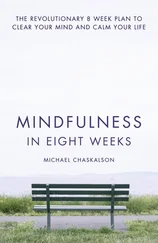Over time, you gain more and more senescent cells, and the accumulation of the damage they create is a major cause of aging and disease. For one thing, when you have too many zombie cells in your tissues, your body becomes less efficient at responding to the hormone insulin. This is the definition of insulin resistance, which as we discussed earlier is a precursor to type 2 diabetes. Zombie cells also lead to an increase in visceral body fat, the type of fat that is stored around important organs in the abdominal cavity and is associated with an increased risk of many diseases, particularly type 2 diabetes.
Zombie cells also contribute to many symptoms of aging that won’t kill you but will make your later years a lot less comfortable. For instance, doctors have known for years that patients who need knee transplants have excess senescent cells in their knee cartilage. In fact, injecting just a few senescent cells into your knees can actually cause arthritis. 7Did senescent cells in my joints cause my arthritis when I was fourteen? Possibly.
Some senescent cells are easy enough to kill off. Others persist like a Netflix binge of The Walking Dead . Perhaps the most damaging types of zombie cells are immune cells. Remember, when you get a cut or an infection, your immune cells proliferate to promote rapid healing. Once you have healed, those extra immune cells are supposed to die off. When they don’t die, they inhibit your immune system’s ability to respond to new infections or injuries. This is one reason the immune system usually becomes weaker as we age. Talk about not dying—pneumonia and the flu together are the eighth leading cause of death in the United States and are both much more common and deadly in people over sixty-five. This is in part because of senescent cells weakening the immune system.
The good news is that there are many things you can do to prevent damage from zombie cells. One of the most important is to keep your cell membranes strong so the cells can function well for as long as possible. I take a supplement comprising calcium, magnesium, and potassium salts of amino ethanol phosphate (AEP)—which helps to support healthy cell membrane function.
The common diabetes drug metformin is also believed to kill senescent cells. In studies, metformin has been shown to alleviate a range of age-related disorders in animals and humans, including metabolic dysfunction, cardiovascular disease, cancer development, and cognitive dysfunction. 8In elderly humans, it has been shown to increase life-span by an additional five years. 9Studies on mice show that these effects stem from reduced cellular senescence and fewer free radicals. 10
Another exciting zombie killer is rapamycin. This drug inhibits a growth pathway called mammalian target of rapamycin (mTOR), which is responsible for regulating critical cellular functions such as cell growth, cell death, cell proliferation, and autophagy. Inhibiting mTOR appears to prevent the growth of senescent cells. In mice, rapamycin increases life-span, improves immune response, delays tissue loss, alleviates frailty with age, and decreases risk of heart failure, cancer, and cognitive impairment. 11Not bad. Some doctors have quietly been using it as an anti-senescence drug since 2015.
I’m currently planning to experiment with taking rapamycin intermittently. It is not without risk—as we’ve discussed, any time you take a drug that accelerates cell turnover, there is a risk of accelerating cancer cell growth. In a couple more years, we’ll know more about the risk-reward ratio, and it will be a lot more affordable. I’m always happy to be a guinea pig, and cutting-edge anti-aging people are using it today. However, unless you’re in desperate straits, this is one hack you might want to hold off on for a little while as new research comes in.
And besides, there are other more affordable and more accessible natural compounds for fighting zombie cells. My favorite is fisetin, a polyphenol found in seaweed and strawberries. One study showed that high doses of fisetin could kill up to 50 percent of senescent cells in a particular organ. 12While research on how to use fisetin to most effectively destroy zombie cells isn’t complete, research indicates that it is a cognitive enhancer. 13This is likely thanks to its direct antioxidant activity and ability to increase levels of other antioxidants in your cells. More antioxidants equals less oxidative stress and more energy throughout the body, including your brain!
It’s not uncommon for researchers to discover that traditional herbs and plant compounds that have been used for thousands of years have anti-aging properties. A prime example is the Japanese herb ashitaba, which is available as a tea or powder and helps prevent zombie cells. It is traditionally used to treat high blood pressure, hay fever, gout, and digestive issues, but researchers recently discovered a compound in the plant called dimethoxychalcone (DMC—no relation to the famous rappers), which slows senescence. In worms and fruit flies, DMC increases life-span by 20 percent. 14We don’t know yet if it will have the same impact on humans, but it may be worth trying this tea to help with one of the Seven Pillars of Aging. I do.
Finally, there’s piperlongumine (PPL), a pepper root extract that’s commonly used in Ayurvedic medicine. It looks promising for reducing senescence, but this knowledge is so new that researchers don’t yet understand the mechanism of action. 15PPL may also have cancer-fighting properties, too, although research hasn’t yet confirmed that benefit. 16It is likely safe to use, but taking it all the time or taking high doses could put a load on the liver. If you do decide to use PPL consistently, your body might have a reduced capacity for detoxing 17—so it’s a good idea to take it for a limited period (one to two months) in conjunction with a liver-supporting supplement like glutathione.
It boils down to this: If you don’t want to die, you must make sure your cells do die when they’re supposed to and stay alive when they’re supposed to.
PILLAR 4—CELLULAR STRAITJACKETS
The space in between your cells contains a network of proteins called the extracellular matrix, which protects your tissues from stress, trauma, and even gravity while allowing them to do their jobs. Visualize a perfect wobbling bowl of Jell-O. Without the matrix, you’d just have weird red liquid. Now imagine that same bowl of Jell-O, but so hardened that it won’t wobble and you can’t even spoon it. That’s what anti-aging scientists call extracellular matrix stiffening.
Not only does the matrix literally hold your cells together, but it also gives your tissues their elasticity. This is incredibly important, especially when it comes to certain tissues such as those that make up the arteries. When these tissues lose their elasticity, they become stiff, and your body has to work harder to push blood throughout your circulatory system. This can of course lead to high blood pressure and heart disease.
So why does the matrix become so stiff? When sugar in your blood circulates throughout your system, it permanently binds with proteins, creating inflammatory advanced glycation end products, or AGEs. Glycation is the process of sugar bonding to protein. AGEs are aptly named, as these end products accelerate the aging process and create oxidative stress in the body. 18
Think about it this way. When you eat something that contains sugar, glucose molecules travel through your body and look for proteins to bind with. Once stuck together, the glucose actually browns the proteins. This is the exact same chemical reaction that takes place when you brown onions in a pan and the sugar and onions become caramelized. When you have high blood sugar, it is at least partially because you made decisions that literally caramelized your insides. Yum. Not really.
Читать дальше












